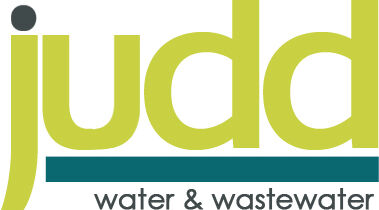Membrane bioreactors − operation and maintenance

Membrane-side and biological-side MBR O&M parameters
Operation and maintenance (O&M) parameters for an MBR comprise:
- membrane side: flux, pressure, permeability, recovery, rejection, membrane aeration rate or crossflow velocity, physical and chemical cleaning cycle times and protocols
- biological side: hydraulic and solids retention time, sludge recycle rate(s).
The biological process parameters do not differ from those of a classical activated sludge (CAS) process, though MBRs are able to operate at longer solids retention times.
The flux (normally denoted J) is the volume of permeate generated per unit area of membrane per unit time. This means that it takes SI units of m3/(m2.s), or simply m/s. But it is normal to use non-SI units either m per day, litres per m2 per hour (or LMH) or, in Imperial units, gallons per square foot per day (GFD). MBRs generally operate at fluxes between 10 and 150 LMH, depending largely on the membrane and separation process configuration and the feedwater quality.
The flux relates directly to the applied transmembrane pressure, or TMP, which includes the hydraulic resistance offered by both the membrane and the interfacial region adjacent to it (or ‘fouling layer’). The ratio of the flux to TMP is then referred to as the ‘permeability’ which normally takes the most convenient units of LMH/bar. In the US, permeability is often termed ‘specific flux’ and takes Imperial units of GFD/psi.
Conventional pressure-driven membrane processes with liquid permeation can operate in one of two modes. If there is no retentate stream then operation is termed ‘dead-end’ or ‘full-flow’; if retentate continuously flows from the module outlet then the operation is termed crossflow and applies to all sidestream systems.
Crossflow implies that, for a single passage of feedwater across the membrane, only a fraction is converted to permeate product. This parameter − the ratio of permeate to feed flow − is termed the ‘conversion’ or ‘recovery’. The recovery is reduced further if product permeate is used for maintaining process operation, usually for membrane cleaning.
Filtration always leads to an increase in the resistance to flow, normally termed ‘fouling’. In the case of a dead-end filtration process, the resistance increases according to the thickness of the cake formed on the membrane, which would be expected to be roughly proportional to the total volume of filtrate passed. Rapid permeability decay then results, at a rate proportional to the solids concentration and flux, demanding periodic ‘cleaning’.
For crossflow processes, this deposition continues until the adhesive forces binding the cake to the membrane are balanced by the scouring force (the shear) of the fluid passing over the membrane. This then leads to much slower permeability decline than for dead-end operation.
Membrane cleaning can be by physical or chemical means, and both are employed in MBR operation and maintenance. Physical cleaning is normally achieved either by ‘backflushing’, i.e. reversing the flow back through the membrane, or ‘relaxation’, which is simply ceasing permeation while continuing to scour the membrane with air bubbles (for an immersed process) or the crossflow (for a sidestream one). These two techniques may be used in combination, and backflushing may be enhanced by combination with air.
Physical cleaning removes gross solids attached to the membrane surface, generally termed ‘reversible’ or ‘temporary’ fouling, whereas chemical cleaning removes more tenacious material often termed ‘irreversible’ or ‘permanent’ fouling.
Chemical cleaning usually employs sodium hypochlorite, an oxidative chemical, in combination with mineral or organic acids (most often citric acid). Cleaning is normally conducted without removing the membrane from the tank or skid (‘cleaning in place’ or CIP). If chemical cleaning is combined with backflushing this is normally referred to as a ‘chemically-enhanced backflush’ (CEB). CEBs are routinely carried out on a weekly/monthly basis for iHF MBRs, and such protocols are normally referred to as ‘maintenance’ cleans.
Physical cleaning is less onerous than chemical cleaning in that it is generally more rapid, demands no chemicals, generates no chemical waste, and is less likely to degrade the membrane. However, its effectiveness is limited, such that chemical cleaning is always required at some point. Since the original virgin membrane permeability is never recovered once a membrane is fouled through normal operation, there remains a residual resistance which can be defined as ‘irrecoverable fouling’ which may build up over a number of years and so ultimately determine membrane life.
Chemical cleaning employed specifically to recover permeability requires higher reagent concentrations and longer contact times than maintenance cleans. Such ‘recovery cleaning’ is not always effective − normally because the membrane has become clogged with sludge solids (a phenomenon often referred to as ‘sludging’ or 'dewatering').
In municipal wastewater treatment, membranes may sometimes also become clogged with ‘rags’ (or ‘braids’) formed from aggregated filamentous matter (specifically textile fibres such as cotton wool) in the feedwater. This is usually referred to as ‘ragging’ or ‘braiding’. Sludging and braiding are the main causes of unscheduled manual intervention in municipal MBRs.









